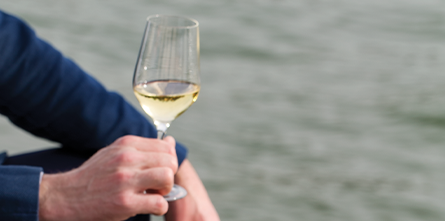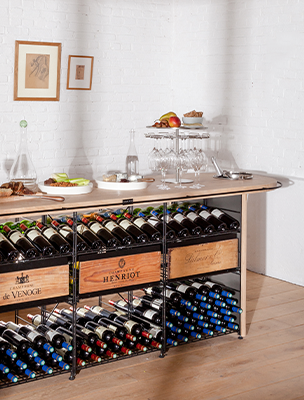
Is there a connection between wine and the moon? Many winegrowers follow the lunar calendar to cultivate the vines and make wine.
In oenology, some wine enthusiasts open bottles depending on whether the moon is in a waxing or waning phase, as they believe that the moon influences the wine’s taste and aromas.
Are these practices based on superstition or scientific facts? L’Atelier du Vin, a French manufacturer of oenological tools since 1926, sheds light on the mysterious relationship between biodynamic wine growing and the lunar cycle.
The Lunar Calendar and Biodynamic Winegrowing
Since ancient times, in many agricultural traditions and cultures around the world, the position of the moon and the stars has played a decisive role in deciding when to sow, tend the soil, prune, and harvest. Biodynamics has brought this ancient practice back to the fore. Did you know?
Lunar Attraction and Sap Fluctuations
The impact of the moon on the ebb and flow of the tide is scientifically recognized. When the moon approaches the earth, it pulls the ocean towards the sky.
Many biodynamic farmers believe that plant sap rises up the branches when the moon is waxing and descends to the roots when the moon is waning.

© Alexandre Couvreux
Lunation and Biodynamic Farming Principles
Biodynamic farming, founded by Rudolf Steiner in 1924, is an environmentally friendly method of agricultural production. Biodynamics contributed to the birth of organic farming and consists of fertilizing the soil with natural ingredients and adapting crops to the rhythm of nature.

Rudolf Steiner
Many vineyards around the world practice biodynamic viticulture, which aims to enhance the vitality of the soil and vines to produce juicy, aromatic grapes. Biodynamics approaches wine estates as living beings.
4 Types of Days in the Lunar Calendar
Biodynamic wine production takes into account the influence of the lunar cycle on plant life. Hence the lunar calendar. Depending on the position of the moon in the sky, each lunar month is divided into:
- root days, for tending to the soil and sowing
- leaf days, for pruning and picking
- flower days, for planting and harvesting
- fruit days, for germination and harvesting



© Philippe Goron
These recommendations may vary according to the moon’s waxing and waning phase. It is also not advisable to work the land or the vines in the event of a lunar node or when the moon reaches the perigee (closest point to the earth).
The Influence of the Moon on Wine: From Vinification to Tasting
Beyond winegrowing, the precepts of biodynamics and the lunar calendar also apply to the various vinification stages of grape must. For example, flower and fruit days are said to be ideal for pressing, racking, filtering, and bottling.

© Alexandre Couvreux
What Is the Best Lunar Day to Open a Bottle of Wine?
Some oenologists follow the lunar cycle to define the best days for tasting. Oenology, a mysterious science, combined with biodynamics, is a reminder that wine is a living being and that the moon exerts its gravitational pull on all liquid bodies

It is, therefore, best to open a fine bottle on a fruit or flower day, when the wine’s fragrances and aromas are best expressed. Root and leaf days, on the other hand, are not ideal for tasting a grand cru.
There is no scientific proof, of course, behind these oenological and biodynamic precepts. But there is nothing rational about the spirit and taste of wine. You only have to taste a special cuvée or a great vintage that has reached maturity, to understand that wine is irrational.
L’Atelier du Vin’s Guides and Advice
How do sommeliers choose wine? What is the difference between champagne and prosecco? What are the different winemaking stages? How can you recognize the fragrances and grape varieties in oenology? Discover L’Atelier du Vin’s guidelines and tips to find out more about a wine connoisseur’s rituals and the art of living wine à la française!




